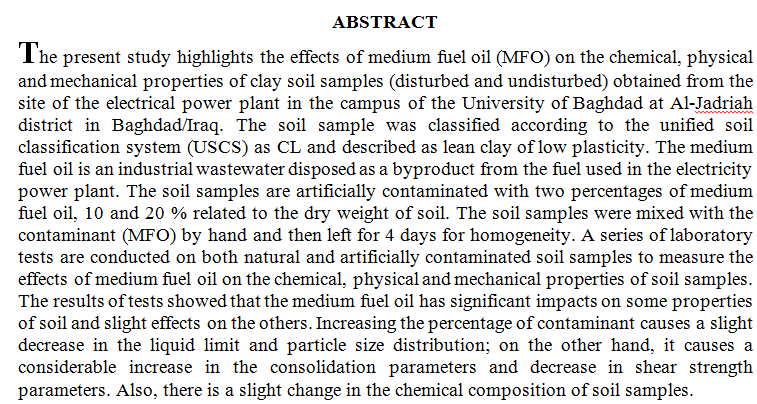
 (16)
(16)
 (14)
(14)
High tunnels, or unheated plastic greenhouses, are becoming increasingly popular among organic vegetable growers across the United States. However, the intensive production typical of these systems presents soil health challenges, including salinization due to high fertilizer or compost inputs coupled with lack of rainfall to leach salts. Legume cover crops may improve soil health in high tunnels by reducing the need for external inputs, while adding organic matter. We tested the soil health effects of a winter hairy vetch (Vicia villosa Roth) cover crop used to replace fertilizer N in an organic tomato cropping system in high tunnels. Studies were replicated across three sites differing in climate and soil type (Kansas, Kentucky, and Minne
... Show MoreElectrical properties were studied for Pectin/PVA graphene composites films and the effect of aqueous interaction on their properties. The conductivity and the dielectric constant of this composite are important because Polysaccharide like pectin is increasingly being used in biomedical applications and as nanoparticles coating materials. The Dielectric and conductivity of composite films were compared in dry and wet condition the differences in the results were attributed to the water molecules and the hydrogen bond which connect the three composite compounds (Pectin, PVA and Graphene) together. These connections were allowed the hydrogen and hydroxyl group’s migrations in the composite super molecules. On the other hand, graphene was pr
... Show MoreA huge potential from researchers was presented for enhancing the nonlinear optical response for materials that interacts by light. In this work, we study the nonlinear optical response for chemically prepared nano- fluid of silver nanoparticles in de-ionized water with TSC (Tri-sodium citrate) protecting agent. By the means of self-defocusing technique and under CW 473 nm blue laser, the reflected diffraction pattern were observed and recorded by CCD camera. The results demonstrate that, the Ag nano-fluid shows a good third order nonlinear response and the magnitude of the nonlinear refractive index was in the order of 10−7 cm2/W. We determine the maximum change of the nonlinear refractive index and the related phase shift for the mat
... Show More (1)
(1)
This research is focusing on finding more effective polymers that leads to enhance the rheological properties of Water Base Muds. The experiments are done for different types of mud for all substances which are Polyacrylamide, Xanthan gum, CMC (Carboxyl Methyl Cellulose). This study shows the effect of add polymer to red bentonite mud, effect of add polymer to Iraqi bentonite mud, the effect of add bentonite to polymer mud. The mud properties of Iraqi bentonite blank are enhanced after adding the polymers to the blank mix, CMC gives the highest value of plastic viscosity and Gel strength than others; X-anthan gives the highest value of yield point and gel strength than others. For the red bentonite mud, Polyacrylamide has the highes
... Show More (1)
(1)
Introduction: This study was performed to compare the effect of Fractional CO2 laser or Q switched Nd:YAG laser of surface treatment on the shear bond strength of zirconia-porcelain interface. Methods: Fractional CO2 laser at 30 W, 2 ms, time interval 1 ms, distance between spots 0.3 mm, and number of scans is (4) or Q switched Nd:YAG laser at 30 J/mm2 and 10 Hz were used to assess the shear bond strength of zirconia to porcelain. Pre-sintered zirconia specimens were divided into three groups (n = 10) according to the surface treatment technique used: (a) untreated (Control) group; (b) CO2 group; (c) Nd:YAG group. All samples were then sintered and veneered with porcelain according to the manufacturer’s instructions. Surface morph
... Show More (11)
(11)
 (9)
(9)
 (10)
(10)
 (3)
(3)
The current investigation examines the combined impacts of ultrasonic radiation and hydrogen donors on the viscosity of heavy crude oil. The impact of exposure time, power, duty cycle, and temperature on the viscosity of Iraqi heavy crude oil with 20.32 API was studied. Also, the viscosity of the oil samples, which were mixed with a hydrogen donor (decalin) and subjected to ultrasonic treatment under optimal conditions, was examined to evaluate the combined impact of ultrasonic radiation and hydrogen donor on the viscosity of crude oil. The viscosity experienced a decrease of 52.34% at 2 min of irradiation, 360 W ultrasonic power, 0.8 duty cycle, 35 ⁰C, and 8vol% decalin. To validate the outcomes of the experiments, asphaltene content, s
... Show More (2)
(2)
 (2)
(2)
Films of pure polystyrene (ps) and doped by bromothymol blue material with percentages(4%) prepared by using casting technique in room temperature , the absorption and transmission spectra has been recorded in the wavelength rang (200-900)nm and calculated refractive index , reflectivity, real and imaginary parts of dielectric constant and extinction coefficient . this study has been done by recording the absorption and transmission spectra by using spectrophotometer .
 (1)
(1)

